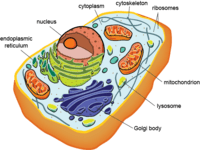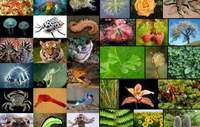
Cell Theory
Quiz
•
Science
•
7th Grade
•
Practice Problem
•
Medium
+1
Standards-aligned
Hai Pham
Used 452+ times
FREE Resource
Enhance your content in a minute
20 questions
Show all answers
1.
MULTIPLE CHOICE QUESTION
15 mins • 1 pt

The 3 parts of the Cell Theory are...?
All living things are composed of cells
Cells are the basic units of structure and function in living things
All cells are produced from other cells
All living things are composed of cells
Cells are the basic units of dance and vibes in living things
All cells are destroyed from other aliens
All living things are composed of Jell-O
Cells are the basic units of structure and function in living things
All cells are produced from factories in Canada
All living things are composed of cells
Cells do karate and practice eating whole pies in their free time
All cells are produced from other cells
Tags
NGSS.MS-LS1-1
2.
MULTIPLE CHOICE QUESTION
1 min • 1 pt

Which of the following scientists was the first to observe bacteria?
3.
MULTIPLE CHOICE QUESTION
1 min • 1 pt

Which of the following statements is not part of the cell theory?
Tags
NGSS.MS-LS1-1
4.
MULTIPLE CHOICE QUESTION
30 sec • 1 pt

The invention of the microscope made it possible for people to discover and learn about
Tags
NGSS.MS-LS1-1
5.
MULTIPLE CHOICE QUESTION
1 min • 1 pt

What is one way in which all living things on Earth are alike?
Tags
NGSS.MS-LS1-1
6.
MULTIPLE CHOICE QUESTION
1 min • 1 pt

When cells are damaged, new cells are created by cell a process called cell division. How does the cell theory support this fact?
It states that all cells have a nucleus which divides.
It states that all living things are made up of one or more cells.
It states that cells come from previously existing cells.
It states that the basic units of structure and function are cells.
Tags
NGSS.HS-LS1-4
7.
MULTIPLE CHOICE QUESTION
30 sec • 1 pt
The ___ is the basic unit of sturucture and function of organisms
Tags
NGSS.MS-LS1-1
NGSS.MS-LS1-2
NGSS.MS-LS1-3
Create a free account and access millions of resources
Create resources
Host any resource
Get auto-graded reports

Continue with Google

Continue with Email

Continue with Classlink

Continue with Clever
or continue with

Microsoft
%20(1).png)
Apple
Others
Already have an account?
Similar Resources on Wayground

21 questions
L'agricoltura e la produzione alimentare
Quiz
•
7th Grade

20 questions
K7 Nilai Kalori Makanan
Quiz
•
7th Grade

19 questions
Wijzer! Nat. Gr7 Kracht en beweging
Quiz
•
7th Grade

20 questions
Simple Machines: First Class Levers
Quiz
•
6th - 8th Grade

18 questions
Classwork on SDG 4: Quality Education-7th graders
Quiz
•
7th Grade

18 questions
9.2 Composition of The Earth
Quiz
•
7th Grade

20 questions
MID-QUARTER ASSESSMENT
Quiz
•
7th Grade

20 questions
Astronomy by Sakarya Bilsem
Quiz
•
3rd - 8th Grade
Popular Resources on Wayground

10 questions
Honoring the Significance of Veterans Day
Interactive video
•
6th - 10th Grade

9 questions
FOREST Community of Caring
Lesson
•
1st - 5th Grade

10 questions
Exploring Veterans Day: Facts and Celebrations for Kids
Interactive video
•
6th - 10th Grade

19 questions
Veterans Day
Quiz
•
5th Grade

14 questions
General Technology Use Quiz
Quiz
•
8th Grade

25 questions
Multiplication Facts
Quiz
•
5th Grade

15 questions
Circuits, Light Energy, and Forces
Quiz
•
5th Grade

19 questions
Thanksgiving Trivia
Quiz
•
6th Grade
Discover more resources for Science

20 questions
Photosynthesis and Cellular Respiration
Quiz
•
7th Grade

10 questions
Exploring Newton's Laws of Motion
Interactive video
•
6th - 10th Grade

20 questions
Balanced and Unbalanced Forces
Quiz
•
6th - 8th Grade

20 questions
genetics, punnett squares, heredity
Quiz
•
7th Grade

22 questions
Plate Tectonics
Lesson
•
6th - 8th Grade

9 questions
Conduction, Convection, and Radiation
Lesson
•
6th - 8th Grade

15 questions
Calculating, speed, distance and Time
Quiz
•
7th Grade

13 questions
Thermal Equilibrium (7.8B)
Quiz
•
7th Grade

